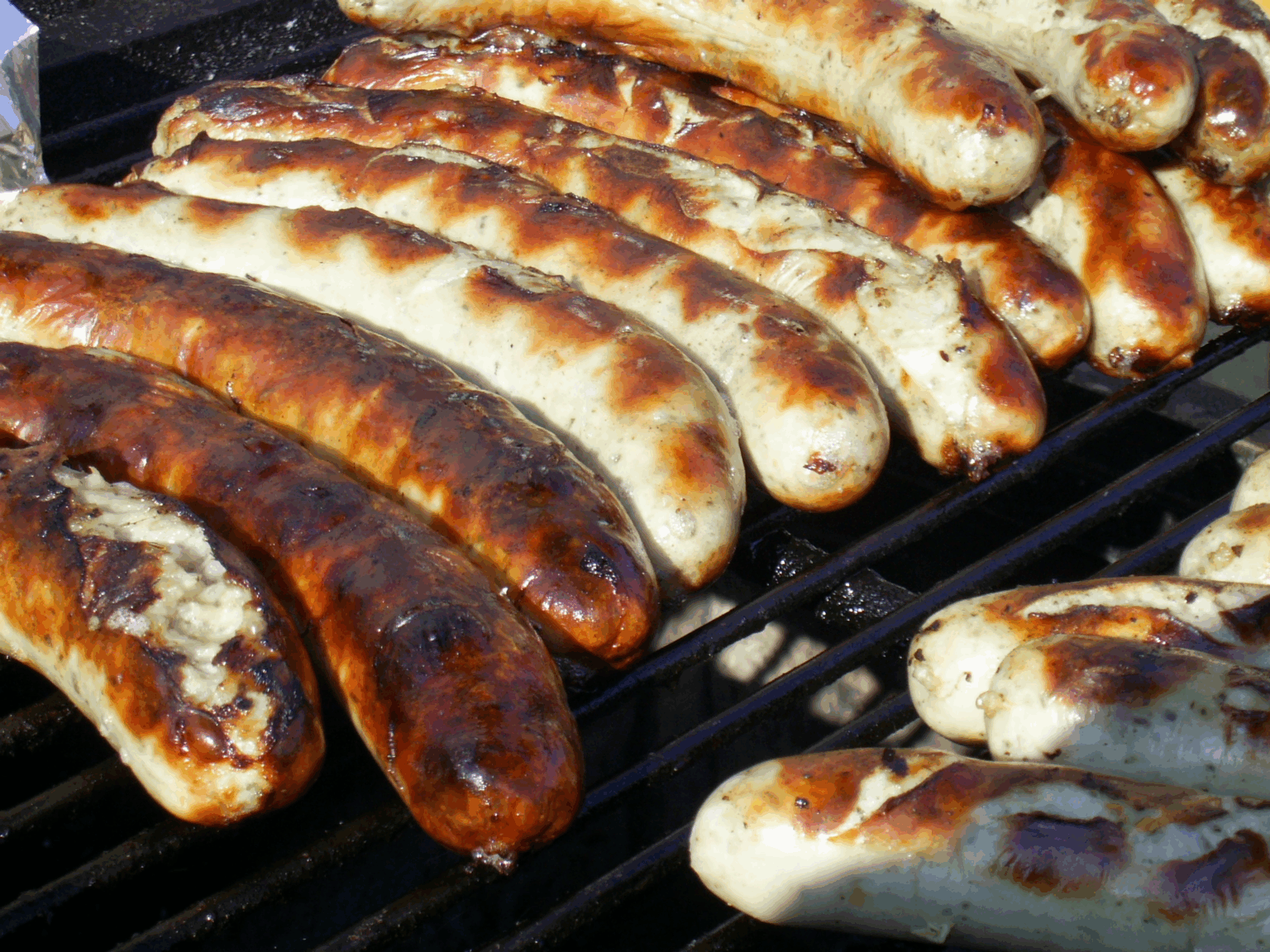This article will focus on the Best Local Dishes to Try in Europe as Europe has numerous culinary options to pick from.
- Key Points & Best Local Dishes to Try In Europe
- 10 Best Local Dishes to Try In Europe
- 1. Paella (Spain)
- 2. Wiener Schnitzel (Austria)
- 3. Pizza Napoletana (Italy)
- 4. Goulash (Hungary)
- 5. Moules-frites (Belgium)
- 6. Croque Monsieur (France)
- 7. Bratwurst (Germany)
- 8. Souvlaki (Greece)
- 9. Cepelinai (Lithuania)
- 10. Fish and Chips (UK)
- Conclusion
- FAQ
Spain has some of the best Paella and Italy has authentic Pizza Napoletana. These dishes represent the culture
Regional components, and the history of the localities. These great dishes will provide you a great experience of the culinary face of Europe.
Key Points & Best Local Dishes to Try In Europe
| Dish | Key Highlight |
|---|---|
| Paella (Spain) | Rich saffron rice with seafood or meat |
| Wiener Schnitzel (Austria) | Crispy breaded veal cutlet |
| Pizza Napoletana (Italy) | Authentic wood-fired thin crust |
| Goulash (Hungary) | Hearty paprika-spiced meat stew |
| Moules-frites (Belgium) | Steamed mussels with crispy fries |
| Croque Monsieur (France) | Grilled ham and cheese sandwich |
| Bratwurst (Germany) | Juicy grilled sausage with mustard |
| Souvlaki (Greece) | Skewered grilled meat with pita |
| Cepelinai (Lithuania) | Potato dumplings stuffed with meat |
| Fish and Chips (UK) | Golden battered fish with fries |
10 Best Local Dishes to Try In Europe
1. Paella (Spain)
The Spaniards’ most iconic dish, the Valencian paella, has become a global favorite. The dish is very colorful, traditional, and prepared in a wide, shallow, gold, and saffron-infused pan.
The classics contain a combination of chicken, rabbit, and green beans; in the coastal areas, the preference is for seafood with shrimp, mussels, and squid.
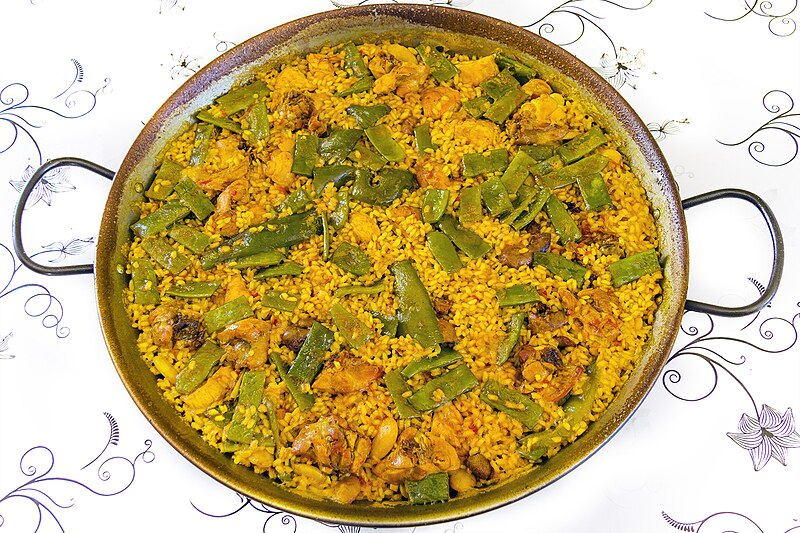
The most critical component of a fine paella is the socarrat, the caramelized crust of rice at the pan’s bottom.
Paella is frequently consumed in family gatherings and festivals, in addition to portraying the Mediterranean climate of the country, and much of the Spanish culture and communal dining Libra culture sandal.
| Ingredient | Description |
|---|---|
| Bomba rice | Short-grain rice that absorbs flavors well |
| Saffron | Adds golden color and aroma |
| Olive oil | Used for cooking the base |
| Chicken and rabbit | Traditional meats for Valencian paella |
| Green beans and tomatoes | Classic vegetables |
| Seafood (optional) | Shrimp, mussels, squid for coastal versions |
| Paprika and garlic | For seasoning and depth of flavor |
| Lemon wedges | For garnish and freshness |
2. Wiener Schnitzel (Austria)
Wiener Schnitzel, with its simplicity yet deliciousness, is Austria’s national dish. The dish proudly features a thin veal cutlet, created by seasoning and preparing, coating, and frying in oil until a gold hue is attained.
Schnitzel is traditionally accompanied by a potato salad, lingonberry jam, and lemon wedges. Variations of the dish in preparing Schnitzel using pork or chicken are common, yet the traditional rest of Austria.
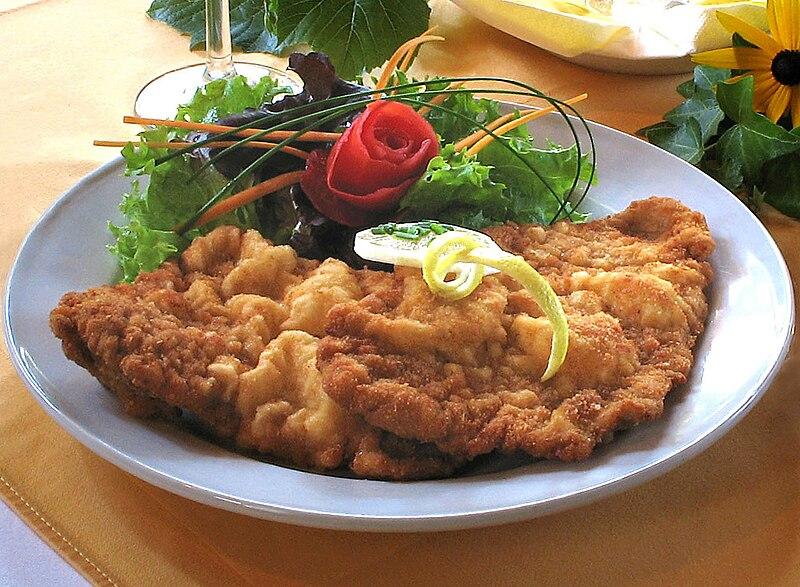
The 19th century contributed much to the culture of the city with the heavy influence and the Schnitzel preparing restaurants.
The cutlet serves to represent the veal importance, while every bite serves the hundreds of years of culinary heritage. It is a crunchy and buttery taste to offer to every citizen, and every tourist.
| Ingredient | Description |
|---|---|
| Veal cutlets | Traditional meat base (thinly pounded) |
| Flour | For the first coating |
| Eggs | Used for binding the breadcrumbs |
| Breadcrumbs | For crispy outer texture |
| Butter or oil | For frying |
| Lemon wedges | Served for freshness |
| Parsley and salt | For flavor and garnish |
| Potato salad or lingonberry jam | Classic side options |
3. Pizza Napoletana (Italy)
Napoletana Pizza comes from Naples, home to all the modern pizzas, and well, all the pizzas in the world, actually.
This treat recognized by UNESCO is topped with San Marzano tomatoes, fresh mozzarella, basil, and olive oil, and quickly baked in a wood-fired oven to achieve a strami baked crust while the base remains soft and chewy.

The most popular is the Margherita, named after Queen Margherita of Savoy and represents the Italian flag.
With its simplicity, this pizza exemplifies the best of Italian cuisine and Naples is home to the best Napolitana Pizza and best pizza cultural experience in the world.
| Ingredient | Description |
|---|---|
| Pizza dough | Made from flour, water, yeast, and salt |
| San Marzano tomatoes | Authentic Italian tomato base |
| Fresh mozzarella (Buffalo or Fior di Latte) | Creamy cheese topping |
| Fresh basil leaves | For aroma and flavor |
| Olive oil | Drizzled before baking |
| Salt | Enhances flavor |
| Wood-fired oven | Essential for authentic texture and char |
4. Goulash (Hungary)
Goulash is a hearty stew and the most famous dish in Hungary. Traditionally a stew of zab, onion, potato and most importantly
Hungarian paprika, it is Hungary Stew is filled with flavor and comfort. The dish is uniquely mine, with the paprika providing a deep red color and smokey-sweet aroma.

Primarily, the English language has a thick and a thin version of the stew, and is accompanied by bread or dumplings, to soak the liquid. This has become the symbol of Hungary and of Target cuisine.
| Ingredient | Description |
|---|---|
| Beef cubes | Main protein, slow-cooked until tender |
| Onions | Base for the stew |
| Hungarian paprika | Gives color and smoky flavor |
| Garlic | For depth of taste |
| Potatoes and carrots | For heartiness |
| Bell peppers | Adds sweetness and texture |
| Caraway seeds | Traditional Hungarian spice |
| Beef broth | Liquid base for simmering |
5. Moules-frites (Belgium)
Moules-frites (mussels with fries) is Belgium’s national dish and most popular comfort dish. Fresh mussels are steamed with white wine, garlic, and herbs, then combined with buttery fries.
The sweet, tender mussels are paired with crunchy fries. The dish is served with a beer, which is part of the Belgian tradition probably because of the beer’s refreshing qualities.
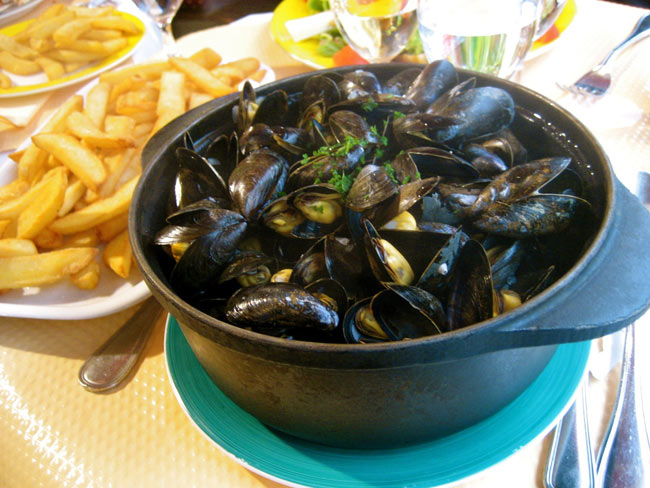
Each region adds their own twist, which usually includes some form of creamy sauce, but the beer and the simplicity of the dish still remains. Moules-frites captures the Belgian refined, yet hearty, love for food.
| Ingredient | Description |
|---|---|
| Fresh mussels | Main protein, cleaned and de-bearded |
| White wine | Used to steam mussels |
| Butter | For richness |
| Shallots and garlic | For aromatic flavor |
| Parsley | Fresh herb garnish |
| Fries (frites) | Served crispy on the side |
| Lemon wedges | For brightness |
| Cream or herbs (optional) | For regional variations |
6. Croque Monsieur (France)
Croque Monsieur is no ordinary café sandwich. Made with ham and melted cheese, which is usually Gruyère or Emmental
a crisp layer of toasted bread and a slather of creamy béchamel sauce, this dish is rich and satisfying. It is often served with salad or fries.

Another version with a fried egg is called Croque Madame. Croque Monsieur was popularized in the early 20th century Paris cafés and is a symbol of French comfort food.
The crisp bread, savory filling, and sauce are perfectly balanced, demonstrating the finesse of French cuisine.
| Ingredient | Description |
|---|---|
| White bread slices | Base of the sandwich |
| Ham slices | Traditional filling |
| Gruyère or Emmental cheese | Melty interior and topping |
| Béchamel sauce | Creamy layer on top |
| Butter | For toasting the bread |
| Nutmeg | Adds subtle flavor to sauce |
| Salt and pepper | For seasoning |
| Fried egg (optional) | Turns it into Croque Madame |
7. Bratwurst (Germany)
As one of the most important dishes in the country, Germany’s bratwurst is a sausage composed of pork, veal, or beef that is seasoned with spices like nutmeg, marjoram, and caraway.
Germany is divided into different regions that each have their own unique sausage variations, with the Nuremburg variety having a fine texture and the Thuringian variety being coarser. Germany is also known for their fine grilled bratwurst.

When served with mustard, sauerkraut, or potato salad, bratwurst becomes a full meal. Beer gardens and festivals, like Oktoberfest, commonly serve bratwurst to their guests.
The bratwurst is more than just a meal, it is a representation of the craftsmanship and culture of Germany.
| Ingredient | Description |
|---|---|
| Ground pork or veal | Main meat for sausages |
| Salt and pepper | Basic seasoning |
| Nutmeg and marjoram | Signature German spices |
| Caraway seeds | For extra flavor |
| Sausage casing | Traditionally natural |
| Mustard | Classic condiment |
| Sauerkraut | Traditional side dish |
| Bread roll or pretzel | Common serving accompaniment |
8. Souvlaki (Greece)
As a Greek street food delicacy, souvlaki is highly cherished for its concentration and simplicity.
The dish is composed of pork, chicken, or lamb with a sous-vide preparation and is grilled after being assembled on a skewer.
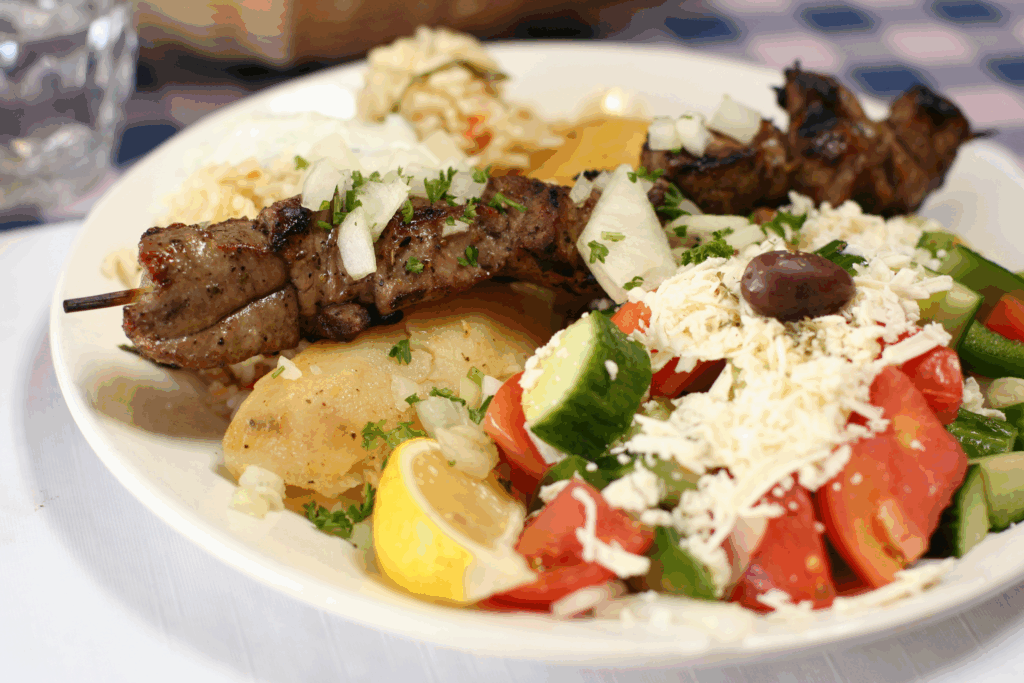
Also served with pita bread, tzatziki, and salad, souvlaki is a dish that is rich in Mediterranean culture, blending different elements and flavours.
The Greek marinade containing olive oil, lemon juice, garlic, and various herbs is served with the grilled souvlaki.
Souvlaki is a dish that is eaten for its rich outdoor culture and hospitality when served at a seaside taverna.
| Ingredient | Description |
|---|---|
| Pork, chicken, or lamb cubes | Main grilled meat |
| Olive oil | For marination |
| Lemon juice | Adds acidity and freshness |
| Garlic and oregano | Core Greek seasonings |
| Salt and pepper | For taste |
| Pita bread | Often served alongside |
| Tzatziki sauce | Yogurt-based dip |
| Tomato and onion slices | Common accompaniments |
9. Cepelinai (Lithuania)
Lithuania’s national dish Cepelinai, which are dumplings made out of potatoes, filled with minced meat, curd, or mushrooms, often are called zeppelins after the oblong shape of the dumplings.
They are boiled then served with sour cream and crispy fried bacon. With the rustic and comforting culinary traditions of the country, it is rich and filling, making it perfect for the cold weather.
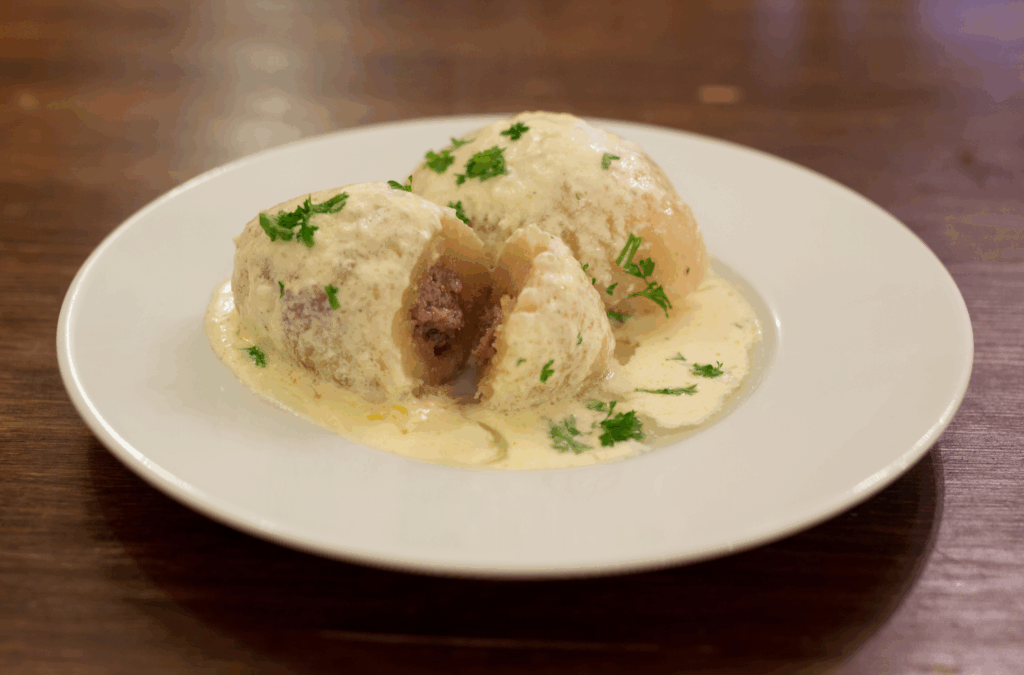
Given the labor-intensive process, it is often served during special occasions or family gatherings.
When you take a bite, a mix of creamy, savory, and smoky flavors comes through making it perfect for anyone interested with the Baltic cuisine as well as Lithuanian home-style cooking.
| Ingredient | Description |
|---|---|
| Potatoes | Main ingredient for dumpling dough |
| Ground pork or beef | Typical filling |
| Onions | For flavor in both filling and sauce |
| Sour cream | Classic topping |
| Bacon bits | Adds salty crunch |
| Salt and pepper | Seasoning essentials |
| Flour or starch | Helps shape the dumplings |
| Water | For boiling |
10. Fish and Chips (UK)
Fish and Chips is, without a doubt, the most iconic British dish. It is made of a white fish, most commonly cod or haddock, coated in a crunchy batter then fried till a golden brown with thick cut potatoes.
Fish and Chips is a well satisfying comfort meal served with mushy peas, a side of tartar sauce, a sprinkle of malt vinegar, and, of course, a portion of mushy peas.

First introduced in the UK in the 19th century, it rightly earned the national favorite status for its affordable price and taste. Today, it is still a timeless classic, filling the taste buds with pure deliciousness.
| Ingredient | Description |
|---|---|
| White fish (cod or haddock) | Main protein |
| Flour | For batter coating |
| Beer or soda water | To make light batter |
| Baking powder | Adds crispiness |
| Potatoes | Cut into thick chips |
| Salt and vinegar | Traditional seasoning |
| Tartar sauce | Common dipping sauce |
| Mushy peas (optional) | Popular side dish |
Conclusion
In conclusion, Europe’s culinary variety presents an amazing trip through flavors, history, and traditions.
Each dish, from paella in Spain to fish and chips in the UK, captures the essence of regional culture and artistry.
To taste these symbolic meals is to appreciate Europe’s warm-hearted people and diverse culture. It is an experience of the continent’s genuine heritage and its welcoming spirit.
FAQ
What is the most famous traditional dish in Europe?
Paella from Spain and Pizza Napoletana from Italy are among the most famous traditional dishes in Europe.
Which European country is best known for its street food?
Greece is famous for street foods like Souvlaki and Gyros, found across its cities and islands.
Are European dishes generally spicy?
Most European dishes are mildly seasoned, focusing more on herbs and natural flavors than strong spices.
What is the national dish of Austria?
The national dish of Austria is Wiener Schnitzel, made with breaded veal cutlets.
Which European dish is best for seafood lovers?
Moules-frites from Belgium and Paella de Marisco from Spain are great choices for seafood enthusiasts.

